17 Common Owner Mistakes That Trigger Aggressive Cat Behavior
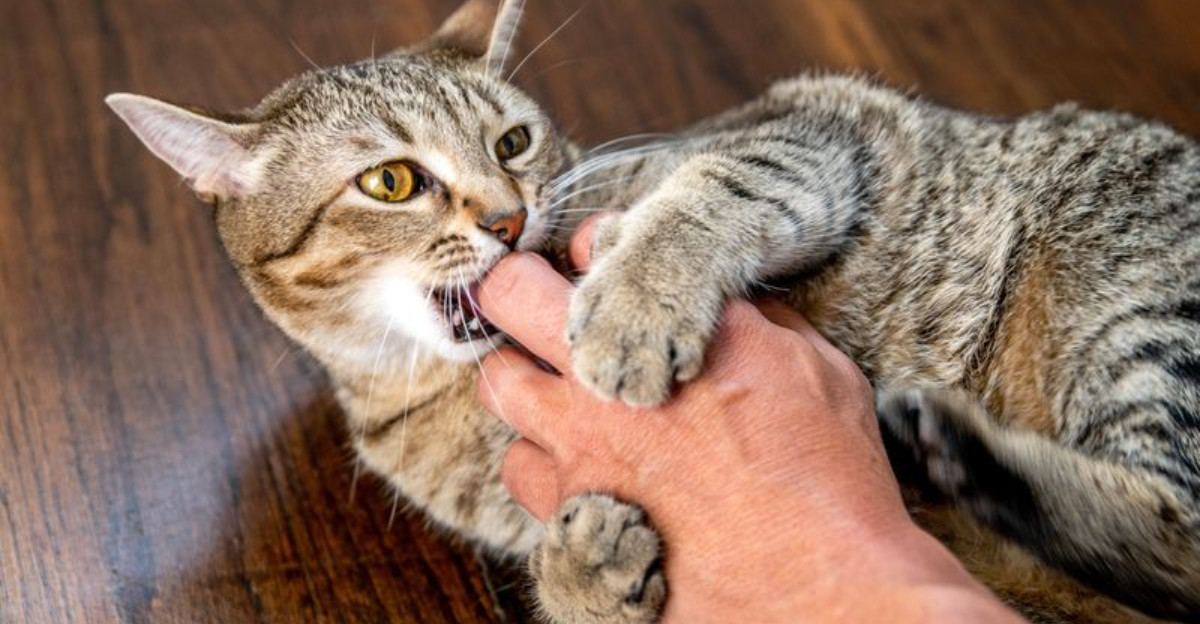
Ever wondered why your sweet kitty suddenly turns into a hissing, scratching tornado? The answer might be closer to home than you think. Many cat owners unknowingly create situations that trigger their feline friends to lash out.
Understanding these common mistakes can help restore peace to your home and build a healthier relationship with your cat.
1. Forcing Physical Affection

Cats have boundaries just like humans do. Picking up, hugging, or petting your cat when they’re not in the mood sends their stress levels through the roof.
Most felines prefer to initiate contact on their terms. Watch for subtle signals like flattened ears or tail flicking that say ‘not now, human.’
2. Punishing Normal Behavior
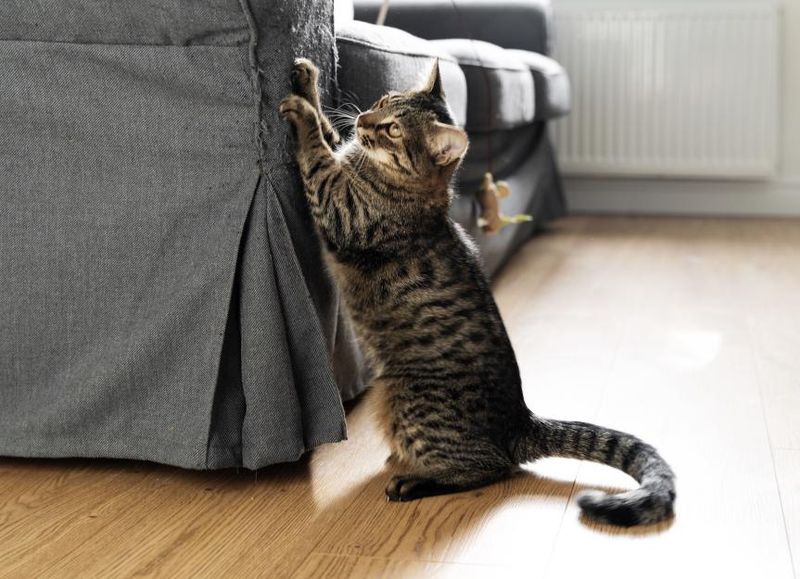
Swatting paws when they scratch furniture? Yelling when they pounce on your feet? These natural behaviors don’t deserve punishment – they need proper outlets.
Your furry friend isn’t being ‘bad’ on purpose. Redirecting these instincts to appropriate toys and scratchers prevents frustration that can spark aggression.
3. Skipping Playtime Sessions

That indoor tiger needs to hunt! Without regular play, all that predatory energy gets bottled up with nowhere to go.
Daily interactive sessions with wand toys let your cat stalk, pounce, and ‘kill’ their prey. Just 15 minutes twice daily dramatically reduces random attacks on your ankles and arms.
4. Rough-Housing With Bare Hands
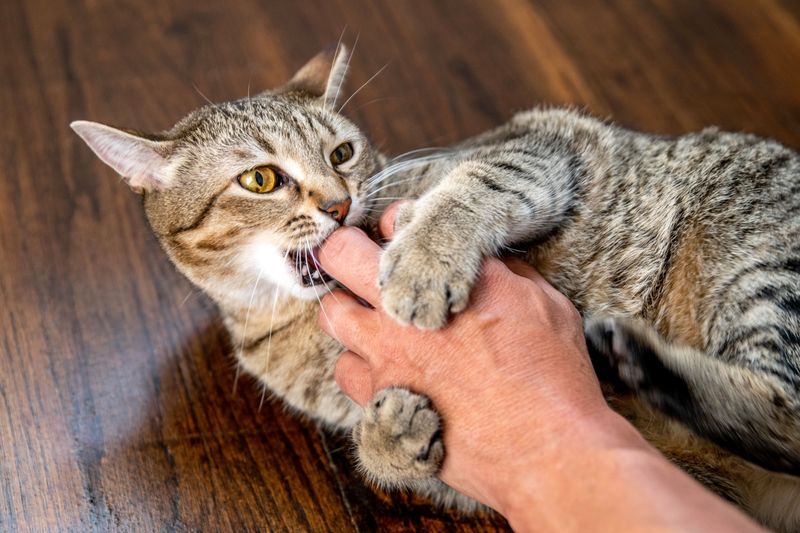
Those adorable kitten wrestling matches with your fingers create a dangerous lesson: human skin is fair game for claws and teeth.
Your playful pal can’t distinguish between welcomed roughhousing and unwanted attacks. Always use toys as buffers between those sharp teeth and your hands to prevent confusion.
5. Creating Territory Conflicts
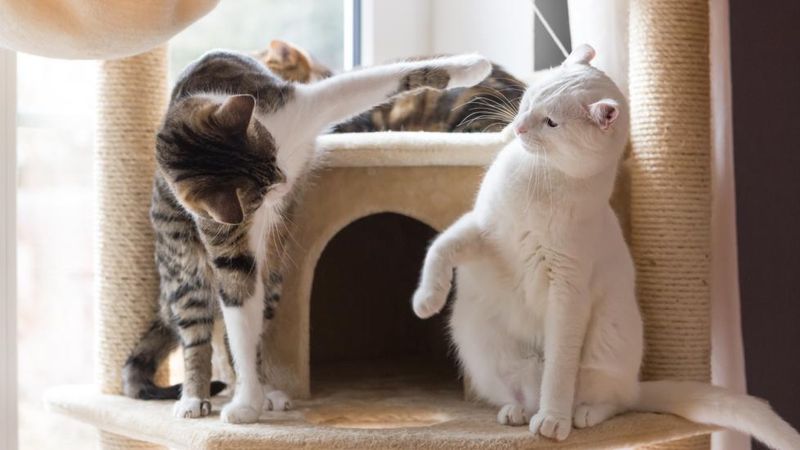
Surprise! Cats are territorial creatures who need their own space. Multiple cats sharing too few resources creates silent warfare in your home.
The magic formula? One litter box per cat plus one extra, separate feeding stations, and multiple elevated resting spots. This simple math prevents resource guarding that leads to fights.
6. Disrupting Their Safe Spaces

Remember that cardboard box your cat claimed? Moving it without warning feels like a home invasion to your sensitive companion.
Cats need predictable environments and secure hiding spots. Constantly rearranging furniture or denying access to favorite perches creates anxiety that can manifest as defensive aggression.
7. Exposing Them To Loud Noises

Those sensitive ears pick up sounds we barely notice. Vacuum cleaners, blenders, and sudden loud music aren’t just annoying – they’re terrifying!
Chronic noise stress puts cats in a constant fight-or-flight state. Creating quiet zones and gradually desensitizing your cat to household sounds prevents fear-based aggression.
8. Ignoring Health Problems

Pain makes everyone grumpy! That sudden aggression might be your cat’s only way to say “something hurts.”
Tooth pain, arthritis, and urinary infections commonly trigger lashing out. A previously sweet cat who suddenly swats when touched needs a vet visit, not a behavior consultant.
9. Skipping Proper Introductions
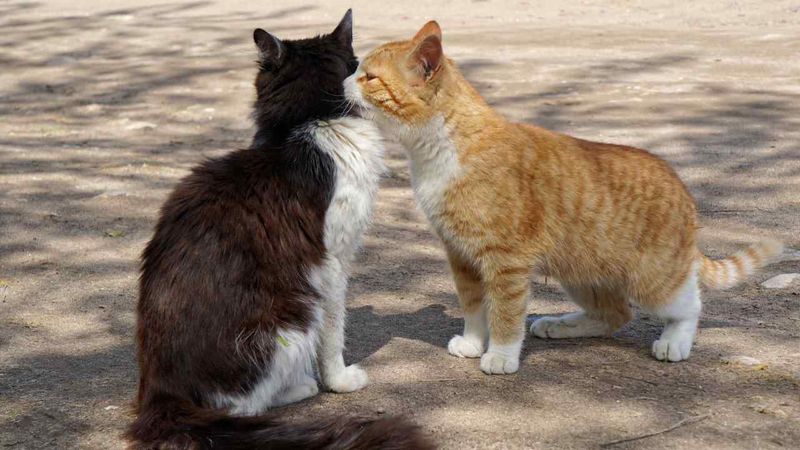
Bringing home a new pet and expecting immediate friendship? That’s like having a stranger move into your bedroom without warning!
Proper introductions take weeks, not hours. Rushing this process creates lasting tensions. Slow, scent-based introductions before visual contact builds positive associations instead of territorial battles.
10. Using Harsh Cleaning Products

That lemon-fresh scent you love? Pure torture for your cat’s sensitive nose! Strong chemical smells overwhelm their powerful olfactory system.
Cats communicate through scent, and harsh cleaners disrupt their sense of security. Pet-safe, unscented products maintain your cat’s scent markers, reducing territorial marking and defensive behaviors.
11. Inconsistent Boundaries

Monday: Kitty sleeps on the bed. Tuesday: You chase her off. Wednesday: Cuddles are welcome again. This inconsistency creates genuine confusion!
Cats thrive on predictable routines and clear rules. Setting consistent boundaries helps your furry friend understand expectations, reducing frustration that leads to acting out.
12. Misreading Body Language

That belly display isn’t always an invitation for rubs – often it’s a trap! Many owners misinterpret subtle warning signs before aggression erupts.
Tail twitching, skin rippling, and dilated pupils are your cat’s way of saying “back off.” Learning these communications prevents painful scratches when your cat’s polite warnings go unheeded.
13. Prolonged Confinement
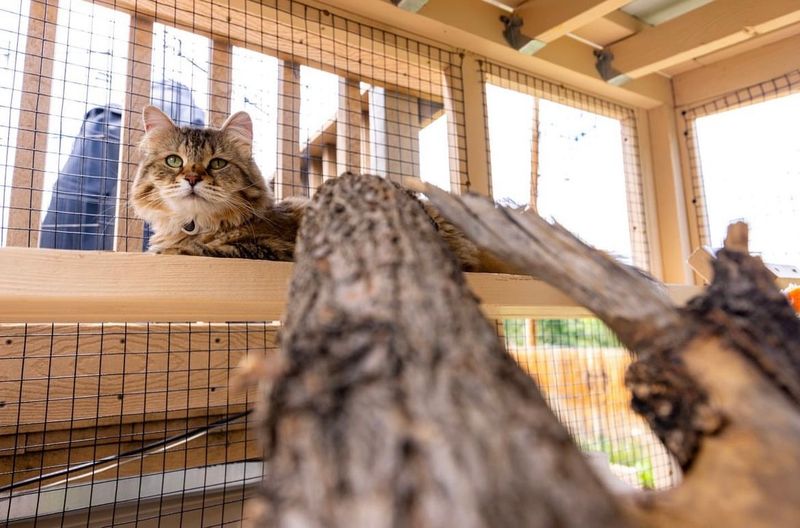
Keeping your cat locked in a single room might seem safe, but extended confinement creates serious psychological stress.
Even shy cats need environmental exploration and stimulation. Gradually expanding their territory with supervised freedom reduces the frustration-based aggression that develops in cats with restricted movement.
14. Overlooking Scratching Needs

Scratching isn’t optional behavior for cats – it’s physically and emotionally necessary! Without proper outlets, frustration builds rapidly.
Vertical and horizontal scratchers with different textures satisfy this primal urge. Placing them in social areas (not hidden in corners) prevents the irritability that leads to redirected aggression.
15. Staring Contests

Those loving gazes feel affectionate to us but read as threatening challenges in cat language. Direct eye contact is confrontational in the feline world.
Your cat may lash out when you lock eyes, especially with unfamiliar people. Slow blinking and looking away shows respect, while teaching visitors to avoid staring prevents defensive reactions.
16. Skipping Environmental Enrichment
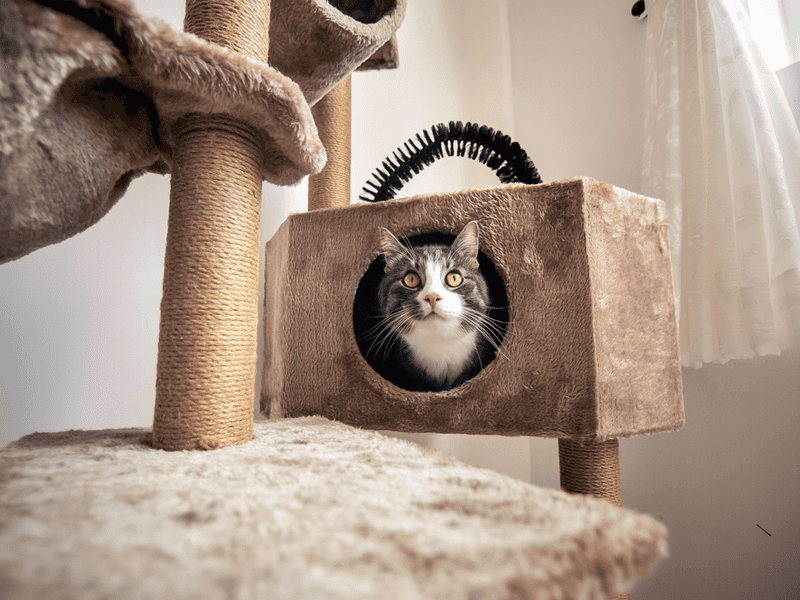
Bored cats become frustrated cats. That pristine, minimalist home might look magazine-worthy but feels like prison to your adventure-seeking feline.
Climbing shelves, window perches, puzzle feeders, and rotating toys provide mental stimulation. An enriched environment prevents the boredom that often leads to ambush attacks and play aggression.
17. Ignoring Outdoor Triggers
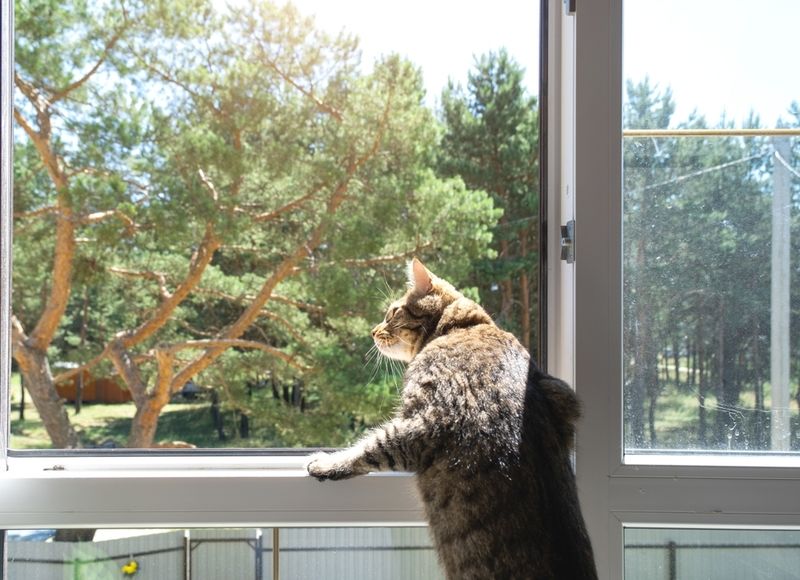
Strange cat lurking outside your window? Your indoor cat sees this territorial threat but can’t do anything about it – except redirect that frustration onto you!
This phenomenon, called redirected aggression, happens when cats can’t reach the actual target of their aggression. Blocking window views of outdoor cats prevents these seemingly random attacks.






